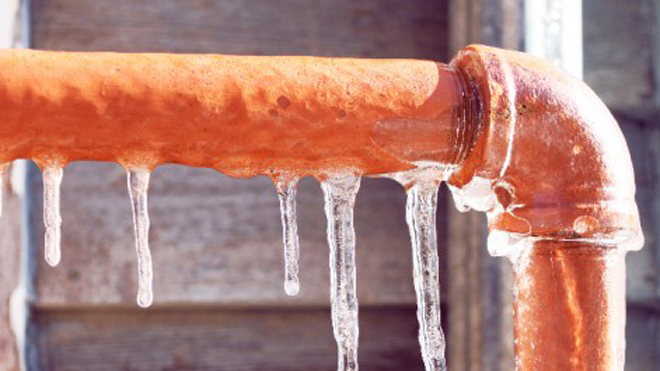Right here down the page you will discover a bunch of wonderful tips on the subject of Helpful Tips to Prevent Frozen Pipes this Winter.

Cold weather can wreak havoc on your plumbing, specifically by freezing pipelines. Below's exactly how to prevent it from taking place and what to do if it does.
Intro
As temperatures drop, the danger of icy pipelines boosts, possibly bring about expensive repair work and water damage. Comprehending how to stop frozen pipes is vital for home owners in chilly environments.
Avoidance Tips
Insulating at risk pipelines
Wrap pipelines in insulation sleeves or use heat tape to safeguard them from freezing temperatures. Concentrate on pipes in unheated or outside locations of the home.
Home heating techniques
Keep interior rooms properly warmed, especially locations with plumbing. Open closet doors to enable cozy air to flow around pipelines under sinks.
Just how to determine icy pipes
Search for reduced water circulation from faucets, unusual odors or sounds from pipelines, and visible frost on revealed pipelines.
Long-Term Solutions
Architectural changes
Think about rerouting pipelines away from outside wall surfaces or unheated locations. Add extra insulation to attic rooms, cellars, and crawl spaces.
Upgrading insulation
Purchase premium insulation for pipelines, attics, and wall surfaces. Correct insulation aids keep regular temperatures and lowers the risk of icy pipes.
Shielding Outside Pipes
Garden tubes and outside faucets
Disconnect and drain garden pipes before winter. Install frost-proof faucets or cover exterior taps with insulated caps.
Comprehending Icy Pipelines
What triggers pipes to ice up?
Pipelines freeze when exposed to temperature levels listed below 32 ° F (0 ° C) for extended periods. As water inside the pipelines freezes, it increases, taxing the pipe walls and potentially triggering them to burst.
Risks and problems
Frozen pipes can bring about water system disruptions, residential or commercial property damages, and pricey repairs. Ruptured pipes can flood homes and create comprehensive architectural damages.
Signs of Frozen Piping
Recognizing frozen pipes early can avoid them from breaking.
What to Do If Your Pipelines Freeze
Immediate activities to take
If you think icy pipes, maintain faucets open up to alleviate pressure as the ice thaws. Make use of a hairdryer or towels soaked in hot water to thaw pipes gradually.
Verdict
Avoiding icy pipes calls for proactive procedures and fast actions. By recognizing the causes, signs, and preventive measures, home owners can shield their pipes during winter.
5 Ways to Prevent Frozen Pipes
Drain Outdoor Faucets and Disconnect Hoses
First, close the shut-off valve that controls the flow of water in the pipe to your outdoor faucet. Then, head outside to disconnect and drain your hose and open the outdoor faucet to allow the water to completely drain out of the line. Turn off the faucet when done. Finally, head back to the shut-off valve and drain the remaining water inside the pipe into a bucket or container. Additionally, if you have a home irrigation system, you should consider hiring an expert to clear the system of water each year.
Insulate Pipes
One of the best and most cost-effective methods for preventing frozen water pipes is to wrap your pipes with insulation. This is especially important for areas in your home that aren’t exposed to heat, such as an attic. We suggest using foam sleeves, which can typically be found at your local hardware store.
Keep Heat Running at 65
Your pipes are located inside your walls, and the temperature there is much colder than the rest of the house. To prevent your pipes from freezing, The Insurance Information Institute suggests that you keep your home heated to at least 65 degrees, even when traveling. You may want to invest in smart devices that can keep an eye on the temperature in your home while you’re away.
Leave Water Dripping
Moving water — even a small trickle — can prevent ice from forming inside your pipes. When freezing temps are imminent, start a drip of water from all faucets that serve exposed pipes. Leaving a few faucets running will also help relieve pressure inside the pipes and help prevent a rupture if the water inside freezes.
Open Cupboard Doors
Warm your kitchen and bathroom pipes by opening cupboards and vanities. You should also leave your interior doors ajar to help warm air circulate evenly throughout your home.

As a reader on Helpful Tips to Prevent Frozen Pipes this Winter, I imagined sharing that piece of content was important. Appreciated our blog? Please quickly share it. Let another person discover it. Many thanks for going through it.
Call Today